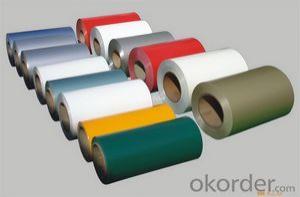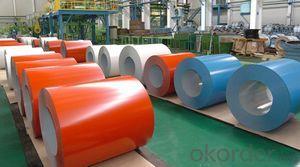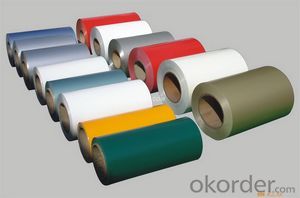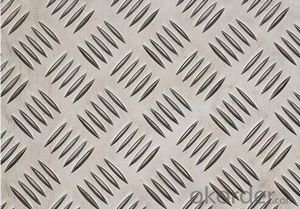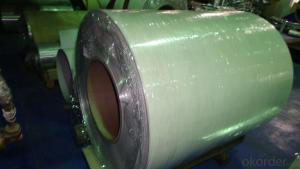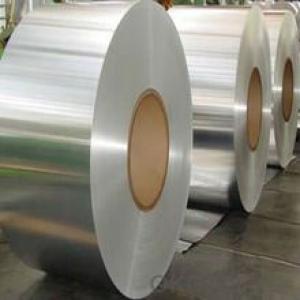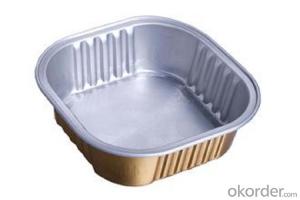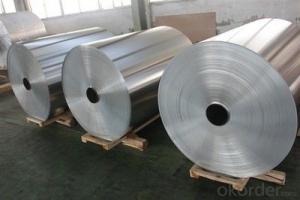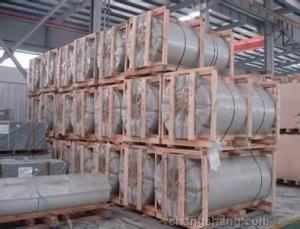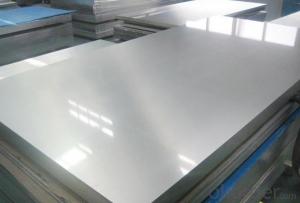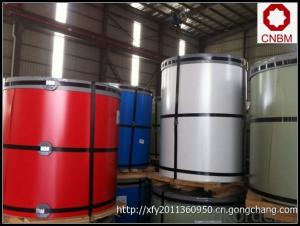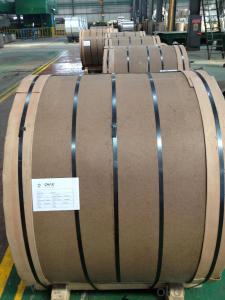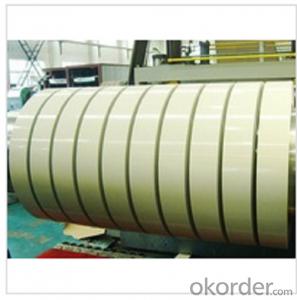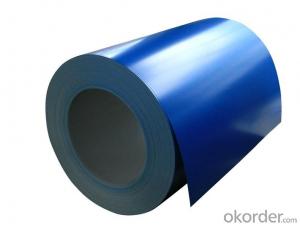Coil Aluminum Sheet - AA 3003 Coated Aluminum Coil
- Loading Port:
- China Main Port
- Payment Terms:
- TT OR LC
- Min Order Qty:
- -
- Supply Capability:
- -
OKorder Service Pledge
Quality Product, Order Online Tracking, Timely Delivery
OKorder Financial Service
Credit Rating, Credit Services, Credit Purchasing
You Might Also Like
supply Mill-finished / coated aluminum plate/sheet/ coil:
Alloy: AA1050,1060,1100,1200,2024,3003,3304,3005,3015,5052,5086,5754,5083,6061,7050,7475,8011, etc
Temper: O, H14/16/18/22/24/32/ H112/H321/T6,T851,T7451,T7351, etc
Thickness: 0.02mm—20mm
Width: 100mm—2000mm (Can be slitted)
Notice: PE coating / PVDF coating / Embossment can be done if required.
- Q: What substances are used to make aluminum coils?
- <p>Aluminum coils are made from aluminum, a lightweight and malleable metal with the chemical symbol Al. They are typically produced from high-purity aluminum or aluminum alloys, which may include small amounts of other elements to enhance specific properties such as strength, durability, or resistance to corrosion. Pure aluminum is soft and lacks strength, so alloys are often used to improve these characteristics for various applications.</p>
- Q: Are aluminum coils suitable for architectural roofing?
- Architectural roofing can benefit from the use of aluminum coils. Aluminum is widely used in construction due to its advantageous properties. Aluminum coils have multiple advantages for architectural roofing. Firstly, aluminum is lightweight, making it easier to handle and install. This is particularly useful for large-scale roofing projects where weight is a significant concern. Moreover, aluminum possesses excellent corrosion resistance. It naturally develops a protective oxide layer that defends against rust and other forms of corrosion. This ensures that aluminum coils are durable and long-lasting, allowing the roofing to endure various environmental conditions over time. Furthermore, aluminum is highly malleable, allowing for easy shaping into different roof profiles and designs. This grants architects and designers greater artistic freedom when creating visually appealing roofing systems. Another advantage of aluminum coils for architectural roofing is their reflective properties. Aluminum has a high solar reflectance, meaning it reflects a noteworthy amount of sunlight and heat away from the building. This aids in reducing cooling costs and improving energy efficiency, making it an environmentally friendly choice. Lastly, aluminum is a recyclable material, further enhancing its sustainability and making it a desirable option for architectural roofing. It can be easily recycled without losing its valuable properties, lessening the environmental impact of the construction industry. To conclude, aluminum coils are indeed suitable for architectural roofing due to their lightweight nature, corrosion resistance, malleability, reflective properties, and recyclability. These attributes make aluminum an excellent choice for roofing projects, offering durability, aesthetic appeal, energy efficiency, and environmental sustainability.
- Q: They say aluminum can be found in deodorants.And this aluminum is absorbed by the skin and block pores.Does the amount of aluminum affect the rate of how it dries up?
- Aluminium zirconium tetrachlorohydrex gly, a common antiperspirant, Aluminum compounds or aluminum salts, such as aluminum oxide (Al2O3), are key ingredients in almost every antiperspirant. They are powerful astringents that close pores, THe aluminum is basically there to stop perspiration.They do not have an effect n how long the application take to dry. Deodorants work by keeping bacteria from growing that use the sweat for food long with skin cells that slough off.
- Q: What are the common recycling methods for aluminum coils?
- Aluminum coils can be recycled using various methods. Mechanical recycling is a commonly employed technique. It entails shredding the coils into small pieces and then melting them to create new coils. This method is both efficient and cost-effective, as it maintains the quality of the aluminum material while allowing for its reuse. Pyrolysis is another method used for aluminum coil recycling. It involves heating the coils at high temperatures in the absence of oxygen. This process breaks down the aluminum into its constituent elements, enabling the recovery of valuable metals and other byproducts. Chemical recycling is an alternative approach for recycling aluminum coils. It involves dissolving the coils in a chemical solution to separate the aluminum from other materials. The resulting aluminum can then be utilized to manufacture new coils. Lastly, smelting is a method that can be employed for aluminum coil recycling. It revolves around melting the coils and separating impurities through electrolysis. This method facilitates the recovery of pure aluminum, which can be utilized in the production of new coils. In summary, these recycling methods play a pivotal role in reducing the environmental impact of aluminum coil production. They conserve resources, minimize waste, and promote the sustainability of the aluminum industry by encouraging the reuse of materials and decreasing the need for new aluminum production.
- Q: why is aluminum oxide used more frequently than silicon carbide as an abrasive?What r the different types of tool feed mechanism in USM process.
- Aluminum oxide is tougher and therefore better suited to grinding steel, and a lot of grinding is done on steel. Silicon carbide is harder, but quite brittle, it tends to break into sharp shapes which is an advantage for nonferrous and nonmetallic workpieces, but the lack of toughness makes it specialized abrasive and therefore it is used less than aluminum oxide.
- Q: What maintenance is required for aluminum coils?
- Regular maintenance for aluminum coils includes cleaning, inspecting for damage or corrosion, and ensuring proper airflow around the coils. Additionally, it is important to check the refrigerant levels and ensure that the coils are not blocked by dirt or debris.
- Q: Aluminum is a metal and nitrate (nitrogen) is a non metal so shouldn't they form an ionic bond and not a covalnt bond? And if it were an ionic bond wouldn't it be called aluminum mononitrate? But it is a covalnt bond (thus a molecular bond and so there is no mono in the name). Pleas help I'm very confused!
- Aluminum okorder
- Q: Can aluminum coils, which are typically used for industrial purposes, be utilized for baking pizza?
- <p>Aluminum coils, commonly used in industrial applications, are not recommended for baking pizza. While aluminum is a good conductor of heat and can be used in baking, aluminum coils are often too thick and not designed for direct contact with food. They may also contain coatings or treatments unsuitable for food. Instead, use aluminum foil or a pizza stone designed for baking to ensure food safety and even heat distribution.</p>
- Q: We have all heard the Us saying aluminum and their euro counterparts saying aluminium. I assumed this was just a small difference in culture or location. But, while reading my chemistry book (Chemistry the Central Science 12th) i came across a section saying: Cations formed from nonmetal atoms have names that end in -ium: NH4+ ammonIUM ion, H3O+ hydronIUM ion. So, i have came up with a hypothesis, could it be possible that when the periodic table was coming together, the aluminium was changed to aluminum to allow the rules to work? Thus making aluminum the correct spelling? Give me your thoughts.
- www.okorder ... aluminum (n.) 1812, coined by English chemist Sir Humphry Davy (1778-1829), from alumina, name given 18c. to aluminum oxide, from Latin alumen alum (see alum). Davy originally called it alumium (1808), then amended this to aluminum, which remains the U.S. word, but British editors in 1812 further amended it to aluminium, the modern preferred British form, to better harmonize with other metallic element names (sodium, potassium, etc.).
- Q: Is it possible to utilize aluminum coils in the packaging of food products?
- <p>Yes, aluminum coils can be used for food packaging. They are commonly used in the production of aluminum foil, which is a popular material for food packaging due to its properties such as light weight, barrier to light and oxygen, and recyclability. Aluminum foil is used to wrap food, line baking sheets, and create containers, providing a protective barrier that helps to preserve freshness and extend shelf life. However, it's important to ensure that the aluminum used meets food-grade standards to avoid any health risks.</p>
Send your message to us
Coil Aluminum Sheet - AA 3003 Coated Aluminum Coil
- Loading Port:
- China Main Port
- Payment Terms:
- TT OR LC
- Min Order Qty:
- -
- Supply Capability:
- -
OKorder Service Pledge
Quality Product, Order Online Tracking, Timely Delivery
OKorder Financial Service
Credit Rating, Credit Services, Credit Purchasing
Similar products
Hot products
Hot Searches
Related keywords
